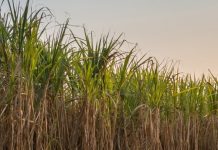Recently, the government provided relief to the sugar industry by allowing the production of ethanol from sugarcane juice and B-heavy molasses for the Ethanol Supply Year (ESY) 2024-25. It also permitted sugar mills and distilleries to manufacture Rectified Spirit (RS) and Extra Neutral Alcohol (ENA) from them. This move has been welcomed by the industry, however sector also urging the government to allow sugar exports. Such exports would not only help sugar millers maintain financial liquidity but also enable timely payments to sugarcane farmers.
In an interview with ChiniMandi, Tarun Sawhney, Vice Chairman & Managing Director at Triveni Engineering and Industries Ltd, stated that while the current export restrictions were implemented to ensure domestic supply, they need to be reevaluated based on the status of closing stocks, balances, and opening stocks. Allowing a small quantity of exports, around 1-2 million tonnes, could significantly benefit Indian producers. He also discussed recent government decisions regarding ethanol production, about ethanol prices, sugar MSP, sugar exports, and the outlook for the 2024-25 season, among other topics.
Q: Recently, the Government lifted the restriction on ethanol production from sugarcane juice and B-heavy molasses. How much relief has this brought to the sugar industry?
Ans: The recent lifting of restrictions on ethanol production from sugarcane juice and B-heavy molasses is a significant relief for the sugar industry. It will allow us to fully utilise our capacities, boost ethanol production in the country and help meet the Government’s target of 20% ethanol blending by ESY 2025-26.
This decision will help in expediting payments to sugarcane farmers, enhancing their financial stability as well as strengthen the financial position of sugar mills by unlocking the value of B-heavy molasses stock, allowing them to generate additional revenue.
Ethanol in India is primarily produced from sugarcane-based and grain-based sources. As per the latest reports from the Government of India, as of August 31, 2024, Oil Marketing Companies (OMCs) have secured 526.65 Crore Liters of ethanol. The sugar sector contributed 231.08 Crore Liters i.e ~44% of the total supply, playing an important role in inching towards the 20% blending target.
Q: Are the current ethanol prices viable for the industry?
Ans: Currently, ethanol produced from sugarcane juice is priced at Rs 65.61/litre, while rates for ethanol from B-Heavy and C-Heavy molasses stand at Rs 60.73/litre and Rs 56.28, respectively. For a long time, the industry has been demanding to revise the ethanol procurement prices for various feedstocks used in ethanol production, considering the fair and remunerative price (FRP) of sugarcane. An increase in prices will not only boost ethanol production but will also improve the financial health of sugar mills.
Additionally, there is also a need to increase the transportation rates, and a long-term ethanol policy from 5 to 7 years to support and encourage ethanol producers. These measures will help sugar mills reach the 20% ethanol blending target by 2025.
Q: Do we have enough feedstocks to meet the ethanol target, and are we on track to achieve 20% ethanol blending?
Ans: The cumulative ethanol blending during November 2023 to August 2024 touched 13.6% across India, as per the recent Government reports. While there have been some challenges in the ESY due to weather fluctuations affecting yields for sugarcane and food grains like rice and maize, the Government has taken proactive measures to boost ethanol production while ensuring domestic availability of sugar.
The sector’s ability to stay profitable and adapt to policy changes will hinge on the successful implementation of the Ethanol Blended Petrol Programme (EBP20) and overcoming challenges related to feedstocks and infrastructure. We anticipate favourable policy developments on ethanol pricing, feedstock availability etc. which will enable companies to plan their distillery expansions effectively and ensure efficient ethanol production for Ethanol Supply Year 2024-25.
We are confident of the Government’s commitment to achieving the 20% ethanol blending target by 2025-26. The Government is committed to enhancing feedstock availability and increasing ethanol production capacity from the current 1,648 crore liters to approximately 1,700 crore liters soon. This requires significant investments in new distilleries and the expansion of existing ones, particularly in molasses-based, grain-based, and dual-feed distilleries.
Q: There are reports that the Government is also planning ethanol blending in diesel. How much would this help the industry if implemented?
Ans: Implementing 5% ethanol blending in diesel could significantly benefit the sugar industry and agriculture by creating a stable demand for ethanol, which in turn supports farmers and boosts the agricultural sector. This initiative, alongside the existing 20% ethanol blending in petrol, would enhance energy security and reduce greenhouse gas emissions, contributing positively to environmental sustainability. Overall, the successful implementation of ethanol blending in diesel could stimulate economic growth and promote a more energy-independent future while supporting the sugar industry’s profitability.
Q: The sugar MSP has been stagnant since 2019 whereas sugarcane FRP has increased significantly. Is it affecting the sugar industry?
Ans: Since 2019, while input costs, especially the FRP, have risen significantly, now standing at ₹340 per quintal, the MSP has not kept pace. The MSP has remained unchanged at ₹31 per kg since February 2019. This discrepancy places a substantial burden on the industry, diminishing profitability and hindering the ability to pay farmers.
Given the rising sugar consumption and higher domestic production projections, increasing the minimum selling price (MSP) of sugar to at least ₹42 per kg will help mills manage rising production costs.
Q: What is your outlook for the 2024-25 season?
Ans: As per the recent estimates, the sugarcane sowing reached 57.68 lakh hectares in 2024 which is slightly higher than the sowing of last year at 57.05 lakh hectares. It is estimated that the gross sugar production will be 34.5 million tonnes in Sugar Season 2024-25 with around 4 million tonnes diversion for ethanol production. This augurs well for the sugar industry as this shift will not only reduce sugar output, but it is also expected to enhance revenues for integrated sugar mills through healthy domestic prices and increased distillery volumes.
Overall, the outlook remains stable for the upcoming sugar season, supported by strong domestic prices and Government initiatives.
Q: Given the high international sugar prices, do you think the government should consider allowing sugar exports?
Ans: Yes, the Government should consider allowing sugar exports, especially in light of the high international sugar prices. While the current export restrictions were implemented to ensure domestic supply, they need re-evaluation depending on where our closing stocks, balance, and opening stocks stand at.
Allowing a small quantity of exports, around 1-2 million tonnes, could significantly benefit Indian producers by providing better sale prices and aiding in timely payments to sugarcane farmers.
Given that the domestic sugar availability remains comfortable and exporting sugar is more profitable for India than selling it domestically, it would be a beneficial move for the industry and the entire value chain including sugarcane farmers.
Q: Is TEIL looking to enhance its production capacities?
Ans: In Q1 FY 25, we commissioned the 200 KLPD multi-feed Rani Nangal distillery, taking our overall distillation capacity to 860 KLPD. We have also enhanced our sugarcane crushing capacity from 61000 TCD to 63000 TCD for Sugar Season 2024-25.
We had previously announced further expansion of distillation capacity to 1110 KLPD, however, considering challenges in availability of feedstocks especially grains, at viable procurement costs, it has been decided to keep the implementation of the new proposed distillery expansion project at Sabitgarh, UP, in abeyance. We will revisit its stance as and when there are developments on this front.
Overall through expanding capacities and driving operational efficiencies, optimising portfolio mix and securing sugarcane availability for the next season, we have positioned ourselves for growth.
Q: What steps should be taken to ensure precise production estimation?
Ans: Accurate crop estimates are essential for informed policy making, efficient resource allocation, and robust planning especially from the plant operations perspective for sugar & ethanol Industry. Achieving this requires a comprehensive approach that blends traditional methods with modern technologies. Conventional techniques, such as detailed agro-climatic zone mapping, provide a solid foundation for understanding crop characteristics and yield potential. However, to significantly enhance precision, the integration of advanced technologies with conventional wisdom is indispensable. By incorporating tools like drones, geo-location mapping, and AI for precise farm boundary detection, along with remote sensing and satellite imagery for continuous crop monitoring, we can achieve unprecedented accuracy. Satellite sensors offer critical insights into crop health and emerging issues, while big data analytics processes weather, yield, and soil data to make fairly precise predictions. Additionally, local sugar mills can empower farmers with mobile apps for mapping and reporting crop health and expected yields.
Q: Recently, the government introduced four new sugarcane varieties. How will the industry benefit from them?
Ans: The introduction of four new sugarcane varieties — Sugarcane Karan 17 (Co 17018), Sugarcane IKHSU-16 (CoLk 16202), Sugarcane IKHSU-17 (CoLk 16470), and Sugarcane CoPb 99 (CoPb 17215) — will provide significant benefits to the sugar industry. These varieties will be available across key regions, including Haryana, Punjab, Rajasthan, Uttarakhand, Bihar, Jharkhand, West Bengal, Assam, as well as Western and Central Uttar Pradesh, ensuring widespread adoption and enhanced productivity in these areas.
These high yielding varieties have been specifically developed to address the challenges posed by climate change and are tailored for different agro-climatic zones, enhancing productivity across key sugarcane-growing regions. With yield potentials ranging from 825 to 932 quintals per hectare, they offer farmers the opportunity to increase their production significantly while adapting to evolving environmental conditions.
Q: Various industries are adopting artificial intelligence. How would it benefit the sugar industry, and is it a necessity at this time? How is TEIL incorporating the same?
Ans: Artificial Intelligence (AI) offers numerous benefits to the Indian sugar industry, including heightened productivity, cost reduction, improved quality, and enhanced transparency and traceability. These advantages position the industry for greater efficiency and growth, making AI adoption essential to meet market demands and sustainability goals. To leverage AI’s potential, the industry is employing modern techniques such as satellite surveillance to monitor sugarcane crops effectively, ensuring optimal growth and yield. Similarly, virtual marketplaces are emerging, enabling farmers and buyers to connect more seamlessly, driving efficiency and fostering stronger relationships within the supply chain.
At TEIL, we exemplify how cutting-edge technologies can optimise various aspects of the sugar production process. Our robust business model is built on the foundation of research & development (R&D) capabilities, excellence in manufacturing, and investments in world-class digital technologies. We have embraced advanced technologies to enhance operational efficiency and decision making aimed at its customer centric approach.
We are committed to empowering farmers by incorporating digital technologies into sugarcane farming. Through our comprehensive sugarcane development programme, we continuously engage with farmers to increase sugarcane productivity. Our dedicated sugarcane development team works closely with the farmers, disseminating knowledge on new technologies and innovations in the field of agriculture in general and sugarcane in particular.
Additionally, we utilise GPS technology to provide real-time information on weather, disease, and other matters. Satellite mapping and drone-based chemical spraying technologies are employed for effective disease management.
Our Triveni Cane platform, a dedicated portal and app, revolutionises farmer engagement by offering valuable insights such as soil testing, fertilizer recommendations, and plot-specific guidance. It facilitates seamless communication between farmers and experts through text and voice messaging in English and Hindi and utilises GPS technology for procurement and real-time updates. The platform’s impact is evident with 1.98 lakh farmers using it regularly, over 1 lakh queries resolved, and 9.25 lakh farmer plots mapped.
We have planned various technology initiatives to further enhance communication with farmers. These include a Text-to-call notification, whereby text alerts are converted to voice and automatically forwarded to farmers. Moreover, we are developing an AI-based communication system aimed at providing prompt responses to farmer queries through AI powered assistance. These technologies will significantly improve engagement with the farmer community, offering real-time updates on crop health, yield potential, and market conditions.













In the conflict of food versus fuel, food has always won. History is the proof.1G ethanol production is economically not viable unless subsidized by the GOI. No government can infinitely support subsidized production of ethanol.
I am NRI from USA. I am presently in Ahmedabad, Gujarat, India to implement my 2g Ethanol Biorefineries. Over last 25 years, I have developed world’s best 2ng Generation Ethanol Biorefinery technology that uses any agricultural crop residues known as lignocellulosic biomass (Bamboo, Bagasse, Rice and wheat stubbles and straws, maize stalk, millet stalk, sorghum stock, jute, banana stump and leaves, etc) as a feedstock and produces Ethanol and other higher value co-products from it. We plan to pay to the farmers more for the sugarcane and agricultural crop residues so that it will double the farmers’ income. Ethanol is a secondary product of about 18% value in my biorefinery. The cost of ethanol in my 2G biorefinery is about INR 19/liter !
Besides, it has the following additional benefits:
1. Carbon negative footprint,
2. Earn substantial Carbon credit.
3. Environmentally very friendly – closed loop plant using minimum liquids and chemicals with no gas or liquid discharge.
4. It will help achieve the India’s ambitious target of net – Zero GHG emissions before the year 2070 !
5. Our multiple products that will permit the development of the large derivative industries
6. Large number of direct and indirect Job creation in rural and urban areas
7. Generate tax revenue at all levels of government
8. It generates 40%+ return on capital investment. That means investment is paid up in 30 month after the commencement of our 2G Ethanol Biorefinery.
Interested party can leave their contact information in their reply.
We are interested in partnering for the technology. Would be interesting to see the proof of concept and the yield.
Kindly share your contacts so that we could meet in person and discuss face to face.